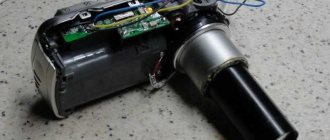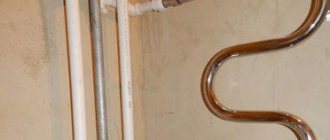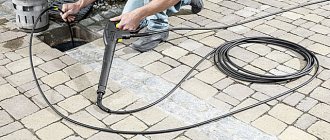Many car owners are interested in whether it is possible to make their too noisy car quieter on their own. A very small number of car enthusiasts are satisfied with the deafening sports exhausts of a running car. For all people, the degree of convenience is very important.
Driving by car can only be enjoyable if you hear as little extraneous and unpleasant sounds as possible inside the car. Also, when traveling by car, it is not safe for the driver to switch to untimely loud sounds - this can lead to an accident. In addition, too loud sounds emanating from the car can cause dissatisfaction with the people around you.
The muffler creates its own background noise, which can be greatly reduced. The result is always very good.
It must be said that here there is information only about a typical exhaust system and muffler. The direct-flow system is not considered. Always remember that both systems are very different from each other. It should also be noted that information is not provided here about the method by which the internal structure of the muffler is rebuilt, a lot of welding work is carried out, etc. This article presents the most popular, accessible and simple methods.
DIY direct-flow resonator
There are fans of direct-flow exhaust, when a loud roar of the engine is heard. But there are also those who think about how to reduce the sound of the muffler. If you make a quiet muffler with your own hands, then the ride will be more comfortable, because the cabin will be quieter. Especially on domestic cars like the VAZ 2109, the question of how to make a silent muffler is relevant. If you can make a quiet muffler on the nine, then the car will bring more joy to its owner.
Possible resonator malfunctions
A faulty muffler resonator not only increases noise when the engine is running, but also reduces its power, as well as allows exhaust gases to penetrate into the vehicle interior. The following signs indicate that the device is faulty:
- unsatisfactory performance of the muffler due to failure of the resonator. An indicator of this is an increase in vehicle noise.
- the sound of rattling metal appears. This is due to the destruction of the internal part of the resonating block, which leads to the failure of the fastening of one of the non-working chambers.
- reduction in engine power. Occurs due to a decrease in the throughput of the additional muffler.
When exposed to high temperatures, products often burn out, and their integrity can be established by visual inspection. If one of the indicated signs of malfunction is detected, the resonator should be replaced. It is not necessary to buy an original one; you can choose one of the universal resonators. Contacting a car repair shop will require certain costs, so it is cheaper to change the resonator yourself. But if you don’t have the skills to check its performance, it’s better to trust the specialists. To avoid unpleasant surprises, it is recommended to carry out periodic diagnostics and timely maintenance.
A properly functioning muffler resonator ensures not only comfortable operation of the vehicle, but also appropriate engine operating parameters, which affects its service life.
Ways to muffle the exhaust sound
Before tuning the exhaust system, you need to understand the reasons why the sound of the engine becomes louder over time. The operation of the engine itself is a fairly loud process, but the muffler and other components of the exhaust system perfectly suppress this loud noise. Without a muffler, the engine noise is very loud.
The explosion releases energy that pushes the piston, and when the piston has moved the required distance, the exhaust valve opens, through which the exhaust gases exit and go further through the exhaust system. To effectively absorb noise, thick metal parts are used. So, the thicker the metal used in the exhaust system, the quieter the car will drive due to the fact that there will be less vibration.
The exhaust manifold is the first one to absorb the noise, which is why it is made so large and thick, so it best dampens the noise that comes from the cylinder block. Even if you compare the exhaust pipe of any more or less normal foreign car with the exhaust pipe of a domestic car, you can see that in foreign cars the pipe is heavier and thicker, which is why such a car runs quieter.
This is why when you drive an old VAZ 2114, the noise is such that you can’t hear what the passengers in the rear seats are saying, which is why you start thinking about how to muffle the exhaust sound.
The exhaust system also has a resonator, which is needed to reduce the speed of gases through the exhaust pipe. And after the resonator comes a muffler. When exhaust gases pass through the resonator, they lose some energy and continue to flow more slowly.
Gases lose the largest share of their energy in the muffler. If we consider a good muffler, then it contains several separate housings, after passing through which little remains of the noise.
Types of devices
The standard exhaust system of a modern car includes a resonator (the first one comes from the engine) and the muffler itself.
The resonator cuts off low-frequency vibrations, and the muffler cuts both low-frequency and high-frequency vibrations, which together leads to a good result.
But the above scheme, both jointly and separately, may include the following types of mufflers:
- Made of aluminized steel;
- Stainless steel;
- Silencers, limiters, absorbers and reflectors;
- Resonator type;
- Direct-flow (sports) analogues.
Aluminized steel
Devices made of aluminized steel are characterized not only by a long service life, from 5 to 10 years, but also by a high price.
It will be difficult to choose such a muffler for your car, since only a few companies produce such devices, and making it yourself will be problematic.
Stainless steel
The devices are in the inexpensive segment, but their service life is only from 2 to 5 years. A big plus is that you can match the element to almost any car.
Limiters
They are usually used as an additional device installed in front of the main one.
The operating principle is based on creating low acoustic resistance.
Structurally, this is done like this: in the pipe, a large diameter turns into a small one, then there is a sharp increase in volume according to the principle of a large bottle with a narrow neck. The sound, entering a large space, decreases.
Reflectors
Used as a secondary muffler installed after the main one.
Exhaust gases entering the device encounter a group of acoustic mirrors on their way. Reflecting from them, the gases dissipate their energy one by one, and the output is a weak sound.
Absorbers
Can be used as a main muffler. The principle of operation is based on the absorption of vibrations by a porous material, usually glass wool, the fibers of which are heated by oscillating, thereby converting sound into thermal energy. Structurally close to direct-flow analogues.
They are considered ineffective because they absorb only high-frequency vibrations and transmit low-frequency ones.
Resonator type
As a rule, they are used first in exhaust systems as additional ones.
The principle of noise absorption is based on the presence of chambers of different sizes, through which the sound is effectively muffled.
Everything is arranged like this: a pipe with slots runs through the center of the resonator, which is surrounded by chambers of different volumes. Through the slots, exhaust gases penetrate into the chambers, where their energy is lost.
After this, the sounds enter the main device, where they are further reduced.
Direct flow
They are also called sports mufflers. As a rule, they are made of stainless steel. Installed on sports and tuned cars.
After installing a direct-flow muffler, the suction of the air-fuel mixture into the cylinders is improved, and the resistance in the exhaust system created by conventional analogues is reduced.
A direct-flow muffler is structurally somewhat similar to a resonator; there is the same pipe with holes and empty cavities separated by partitions. Only the cavities themselves are filled with basalt wool (or other material), which can withstand high temperatures.
Consisting of long mineral fibers, basalt wool absorbs sounds well, but only until it is blown out of the direct flow and even special protective metal mesh does not save the situation.
If the direct-flow muffler, when you tap on it, begins to sound like an empty metal container, then it needs to be filled again with cotton wool or replaced. And the sound produced by the exhaust system will be different.
How to make the quietest muffler for a car yourself?
When the issue with noise during car operation has gone too far, and you have decided to make the quietest muffler for the car, then you need to start by preparing the tool. We will need:
The surest and most inexpensive way to make a muffler quieter is to weld in an additional resonator. This can be done in a garage yourself.
An additional resonator can be placed between the standard resonator and the muffler. You can install a ready-made resonator; you just need to weld it into the desired place in the pipe. Or you can assemble the resonator yourself. For those who doubt whether the exhaust will become quieter if an additional resonator is welded in, the answer is clear - the exhaust will become quieter. If everything is done correctly.
Assembly of a future muffler for a car
Pajero mini
We take the pre-prepared profile specified in point 1 and point 2 (size 40*40 mm and 50*50 mm, respectively).
We weld a profile measuring 40*40 mm tightly on one side.
We insert a profile of a smaller diameter into a profile of a larger diameter.
Now the main task is to ensure that the inserted profile of a smaller size is at a uniform distance from the walls of the profile into which it is inserted (does not touch them). You can put some kind of “bonnets” on each side. By the way, you need to insert a 40*40 mm profile with the welded end side to the drilled holes of the 50*50 mm profile into which it is inserted.
Next, you need to tightly weld the end side of the 50*50 mm profile together with the 40*40 mm profile inserted into it. But again, I repeat, the walls of the smaller profile should not touch the 50*50 mm profile inside.
The process is labor-intensive, but believe me, it's worth it.
It should look something like this:
We will need a small protruding section of rolled metal so that at the junction with the exhaust pipe there is a kind of internal amplifier (so that the muffler does not come off from the exhaust pipe at this point on the road).
It should be located inside the main exhaust pipe and provide rigidity at the welding site.
Now we need to drill several holes with a diameter of 7 mm in the end of our internal muffler structure.
These five holes provide a kind of passage of the exhaust flow, which goes through the main exhaust channels of the muffler to the outlet (a kind of purging of the exhaust system).
The next thing we will do is weld one part of the already welded muffler part to another part.
Please note that the side with the drilled holes is welded to the second part of the muffler. Everything is scalded well
Well, we are getting closer to the answer to the question of how to make a homemade muffler for a car.
It remains to weld the last part to our structure - this is a section of profile measuring 80*80 mm and 27 cm long.
The internal profile should also be in the middle of the 80*80 mm profile (during installation, use something like “caps” to center it). All connections must also be well brewed.
There is nothing to describe here, it all depends on the car to which this muffler will be applied (depending on the space under the bottom of the car).
I’m sure you shouldn’t have any questions about connecting our homemade muffler to the existing exhaust pipe.
The end result looks like this on the car:
In my opinion it turned out very well. As for its operation, all I can say is that there is no more noise, and no rattling, the car runs quietly and smoothly. The muffler turned out great.
Therefore, if you have a desire to change your “Dead” muffler for something really worthwhile, repeat everything as written here and you will have a good homemade muffler for your car that will serve you much longer than the one you buy in the store.
The total length of the muffler was 66 cm, its weight was approximately the same as the muffler from the store, or even less.
I guess I'll finish here, good luck to everyone on the roads.
Sincerely, blog author: Doctor Shmi
How to make an additional muffler resonator with your own hands
Making a muffler resonator with your own hands is quite simple; now we will discuss each step in detail. First you need to make an outer casing, it can be made from any steel pipe with thin walls: which looks like this:
The end part looks like this:
Then you need to take perforated iron with a thickness of 4.5 mm. This is enough to insert it into the end part, as in the photo below:
Next, you need to fill the resonator with something; ordinary tin sponges are perfect for this purpose.
Then you need to pull the resonator body onto these washcloths, as in the photo:
Then you need to take rivets and rivet the entire structure, so you don’t even need to weld it, like this:
For those who like to cook, you can also brew the end parts to the central part.
When everything is ready, you need to process the seams and you can paint them with heat-resistant paint, and after that the quietest muffler on your car is ready.
Possible inconveniences associated with a quiet muffler
It is also necessary to test in action how the exhaust system works so that gases exit normally through the exhaust pipe. Therefore, it is necessary to check at higher speeds, then it will be possible to draw the right conclusions. But as a rule, gases will escape through such a resonator without difficulty.
And then in the video there is another way to reduce the sound of the muffler, making a really very quiet exhaust system:
Fans of auto tuning are ready to endlessly carry out “experiments” on their car, just to somehow stand out from the crowd, but the first thing that changes in the device is the installation of sports mufflers. Any intervention in the design of standard machine systems must have a clear justification and be carried out in compliance with certain technologies and rules. When starting to modernize components such as the exhaust system, you should know exactly what the final result should be and how to do it correctly.
How to make a forward flow with your own hands
A good direct-flow system produced by sports car manufacturers costs serious money, and the desire to make a direct-flow system yourself is quite understandable. If you look at such accessories in detail, you will notice that they are a standard exhaust outlet with a modified design - smoothed bends and a small number of welds. Due to this structure of the exhaust system, it becomes easier for the car to cope with the emission of exhaust gases into the atmosphere.
Making a forward flow with your own hands is not as difficult as installing it on a car, but you should understand that such interference in the design of the car has its own effect on different models. Most often, a homemade direct-flow system is installed on “weekend cars” that were purchased in order to conduct various experiments on them.
To make a direct flow yourself, you will need: a metal pipe with a wall thickness of at least 3 millimeters, a welding machine, a drill, a grinder (for cutting metal), stainless steel (metal sponges for washing dishes are most often used - about 50 pieces).
The process of self-production of direct flow is as follows:
Attention: some sponges may come with improvised “hooks” made of paper, plastic or fabric. Such elements must be removed from the metal before placing it in the resonator.
It is important to note that this method is only one of many options for independently creating a direct-flow pipe from an existing muffler. Some car enthusiasts assemble direct flow from scratch, which is much more expensive and more labor-intensive. This modification is simple, and even a driver without experience can perform it.
Muffler replacement
The noise reduction device must be changed from time to time. In most cases, after a certain period of use, it begins to make loud and unpleasant sounds during operation. This is facilitated by the development of corrosion, burnout of perforated areas of pipes, and breakdown of sound reflectors.
First of all, you need to park the car on a flat, hard surface, make sure that the car does not roll anywhere, and jack it up. It is better to install it on trestles after lifting the car, but you can also use an inspection hole.
Before removing the muffler, it is recommended that you lubricate all bolts and clamps that will need to be removed with a penetrating lubricant such as WD-40. You can try removing the rust with a stiff steel brush. In the worst case, you will have to cut the bolts, as the flanges often become sour.
Next you need to remove the muffler itself. First, you need to unscrew the bolts on the flanges, after which you separate the muffler from the exhaust pipe, which is then recommended to be secured with a rope or some kind of wire to the steering rack so that it does not dangle.
The muffler is then removed from the rubber pads that cushion it.
After unscrewing all the bolts and removing all the cushions, the muffler should simply be pulled out.
The new muffler must match your car model and make. It is recommended to buy it from trusted auto stores and trusted brands. It is worth paying attention to the quality and thickness of the steel on the tank. On average, it varies from 1.2 to 1.5 mm.
Installing a new muffler is carried out in the reverse order described above. In general, there is nothing complicated.
You can watch the video :
The role of mufflers in cars
In order to determine for yourself what kind of muffler you need, you need to know all the functions of this device.
Firstly, it suppresses noise, but this is done in several stages. On the first, this function is performed by the muffler resonator; it is placed immediately after the collector pipes, that is, it is the first or front chamber of the standard unit. This resonator not only suppresses primary sound waves, but also evens out the pulsation of the gas flow from the engine.
The muffler in a car is a very important part.
Secondly, in the next chamber the noise from the running engine is completely absorbed. This is achieved by various methods of removing gases, for example, shifting the flow by 90 degrees or using perforated tubes inside the main chamber, but more often the methods are combined in one device.
Thirdly, the muffler is capable of purifying exhaust gases. This happens at the molecular level using a gold or platinum mesh through which the exhaust gas passes. It is clear that due to the high cost of materials, these systems are not installed in all cars. But, nevertheless, such mufflers are used quite widely.
Checking the resonator
When identifying the problems listed above, every motorist should know how to check the resonator . This will not only normalize the operation of the engine and exhaust system, but also increase the comfort of using the car, including for the people around you.
To check, you will need an inspection hole (if you don’t have one, you can jack up the car). Diagnosis is made using visual inspection. During the process, it is necessary to carefully examine the integrity of both the device itself and the pipes connected to it (especially at their joints).
When working in an inspection pit and when lifting the machine on a jack, always be careful and follow safety rules.
A clear sign of a problem is the formation of condensation in the cooling resonator, after which it begins to drip to the ground. This means that its body has lost its tightness and must be repaired, or better yet, replaced. You can check for condensation after some time, when you turn off the engine (to allow the resonator body to cool). Note! Some car enthusiasts, when making resonators on their own, specially drill a hole in its body to remove moisture . Therefore, if you bought a car with a similar resonator, then this testing method will not work for you.
Also, the integrity of the resonator body can be determined by the presence of exhaust gases leaving it. This also indicates depressurization and the need to replace it. This fact can be checked with the car engine running by looking under the bottom. To be sure, you can ask an assistant to “turn on the gas” at the same time so that more exhaust gases pass through the system. Also, suspicion of depressurization is caused by the appearance of smoke from under the bottom of the car while driving or when parked with the engine running.
As practice shows, it is better not to repair the resonator, but to replace it. This is especially true for cars with significant mileage (more than 100 thousand kilometers).
Detection of resonator defects
All of these defects, to one degree or another, worsen the sound quality of instruments: they reduce the volume or cause several reeds to sound simultaneously, worsen the excitability of the reeds, or increase air consumption. Therefore, in most cases they can be identified by playing them on an instrument.
To determine the causes of poor sound, it is necessary to disassemble the accordion and carefully check the bars and resonators.
Detection of defects in resonators should begin with checking the strength and accuracy of installation of the resonators. If the resonator is installed correctly, defects should be looked for in the installation of strips on the resonators. If there are no defects in the installation of voice strips on the resonators (the gaps between the strips and the resonator are well filled with mastic), the strips should be removed and the resonators checked. All adhesive connections and parts of the resonator are checked.
With removable resonators, air may pass between the soundboard and the sockets due to loose joints of the pads on the sockets or their unequal thickness.
Types and their differences
There are several types of mufflers and each has its own individual characteristics. Each is described in detail below.
Reflective
They are sometimes called reactive. The operating principle is based on multiple reflections of sound. This is achieved by changing the diameter of the tubes or the number of branches.
Resonator
These are the same jets, but with a slightly modified design. Sound attenuation is achieved thanks to the weakly damped resonances of its elements.
There are several types of mufflers
Restrictive
This is the simplest type of device, based on replacing a large hole with a small one. Which significantly reduces engine power.
Absorption
A simple but not very effective muffler, the action of which is based on the absorption of sound waves in a noise-absorbing material. Usually this is basalt wool laid around the gas outlet pipe.
What is a flute in a direct-flow muffler, and what is its effect?
To make the forward flow quieter and get “passing” decibels at the output, a simple design is used, which motorists call a flute. This is a piece of perforated tube with a length of 180–250 mm and a diameter of slightly more than 1/3 of the exhaust, with a welded plug washer in the form of a disk, cylinder or cone, which is bolted inside the forward flow, at the air cut, thereby allowing it to be muffled.
The principle of operation of the flute for direct flow is that when the cross-section of the exhaust channel changes and exhaust gases exit through the perforations, the following occurs:
- change in speed and pressure;
- the sound wave breaks;
- the volume decreases by 3-4 dB, the exhaust becomes quieter.
conclusions
Whatever the purpose of replacing the muffler and the reason for the desire to make it yourself, there is nothing difficult in both technologies if you have basic welding skills.
It is no secret to most of my subscribers that I specialize in the manufacture of exhaust system elements, namely the manufacture of resonators and mufflers.
I was prompted to write this entry by another question: “why is it so expensive?” I don’t know whether the question is symbolic or rhetorical, but since this is not the first time I’ve heard this, I decided to chew on this topic a little.
Let's start with the resonator.
First, I will add a short excerpt from Wikipedia: The flame arrester or “pre-muffler” (also known as a “resonator”) - provides reflection of exhaust waves (hence the name “resonator”) and the first stage of noise reduction and gas pulsations.
I will give
the main criteria for the silence of the exhaust system and its elements: - Pipe diameter.
The more the louder, but that doesn't mean it's better. Everything has its own reasonable dimensions. This also includes the bends of the pipe itself, but they affect the volume to a lesser extent. The exhaust gas flow must have an exit velocity and not flow freely through the pipe. Here the principle “the boys approve” or “they say it will fly right away” when choosing a diameter will not work, it’s better to look at the graphs just below. It was not invented by me, but verified by numerous measurements.
— Volume of resonators/silencers and their number.
Here everything is the opposite than with the diameter of the pipe; the larger, the quieter. If it is not possible to make a large resonator/muffler, then you can install two smaller ones.
Manufacturing direct flow for VAZ option 1
We will need the following materials and equipment:
- Metal pipe with a diameter of 52 millimeters (suitable for all old VAZs with an engine capacity of 1.6 liters).
- Welding machine.
- A grinder and several spare discs designed for cutting metal.
- Iron sponges intended for washing frying pans (sold in almost any hardware store) in quantities of approximately fifty.
So, the process itself.
First, we remove our old muffler and, using a grinder, cut a hole in the resonator along its entire length. There should be a kind of “lid”, opening which we will see all the insides of the resonator. These insides will consist of several stiffening ribs located perpendicularly, as well as two pieces of pipe directed towards each other. We need, using the same grinder, to cut out all these insides.
We must cut the pipes almost to the root (leaving 3-4 centimeters on each side in order to be able to weld our new pipe). We take a pre-prepared pipe D52 and cut it to a length equal to the length between the ends of the cut pipes in the resonator.
For forward flow, an old muffler is used and, using a grinder, a hole is cut out in the resonator along its entire length
After that, we make cuts over it with a grinder every one and a half to two centimeters (you can use a drill and make a lot of holes, but this will take much more time and effort) - in the end, you should get a pattern resembling a herringbone. We weld this part to the pipe scraps in the resonator and fill all its empty space with metal jaws.
After this, we weld the lid back. We cut off the “tail” of the muffler (the part that goes from the resonator to the place where the exhaust gases exit to the outside). In this place we weld another piece of D52 pipe approximately 50 centimeters long.
We considered an option where the basis for direct flow was an old muffler installed on the car from the factory.
Let's now talk about the situation when the owner of the car wants
How to make a muffler for a car with your own hands?
Making a muffler with your own hands is not very difficult if you have the appropriate tool and experience working with it.
DIY muffler made of stainless steel
Made of stainless steel
In this case, making a muffler with your own hands will be divided into several stages:
It is recommended to weld all seams with high precision so that there are no micro-holes, then the muffler will last for many years, remaining hermetically sealed.
Work process
From a fire extinguisher
To make a muffler from a fire extinguisher, you will need an empty fire extinguisher, approximately 0.5 meters high. The pipe for direct flow is made in the same way as in the first option - holes are drilled in it along the entire length.
The fire extinguisher itself must be prepared for the installation of pipes in it. That is, cut off the front and back parts; in the future they will serve as flanges.
In the cut parts of the fire extinguisher, holes are cut with a diameter corresponding to the perforated pipe. Then they are put on it and carefully welded. A heat insulator and basalt wool are wound onto the pipe itself. After this, the pipe is placed in the fire extinguisher body and welded on the side of the previously cut flanges.
Homemade mufflers.
How to make a homemade car
It is also possible to make a device that removes noise with your own hands. Some motorists decide to make an analogue with their own hands and assemble the muffler with their own hands. Stainless steel or other metal acts as the main component, a potential structure. Fasteners for installation can be used from an old device. With a competent approach to the matter, it is not difficult to find the dimensions and parameters - in the instructions. If you want to accurately recreate the structure and dimensions of the old device, find the appropriate description. Main conditions and creation technique: The exhaust pipe element must be located along the body and inserted inside, with a free space equal to half the total length. The outlet opening should be close to the side wall. The outlet pipe is immersed approximately 0.7 cm inside the main pipes during installation. A worthy alternative to repairing with a sealant is to make a device from an old fire extinguisher. Necessary actions:
- Making the powder fire extinguisher empty (freeing up internal space)
- Removing the faucet
- On the surface of the case, we make a hole equal to the tube of the future device.
- We also make a hole at the bottom, but this time closer to the wall
- We make holes in those sections of pipes that will be located inside.
This was the preparation stage. Now you need to try on the structure in the area of the standard muffler. If the hole is aligned with the pipes, securely fix the device by welding. We remove the components and complete the assembly. We looked at several ways to restore a silencer. Melon options are the simplest and most effective, but far from the only ones. There are quite a large number of schemes that allow you to restore the operation of the device in question. When making a muffler, use stainless steel, this will significantly increase the service life of the new muffler. By creating a design that is easy to disassemble, you will add the ability to replace individual parts.
Do-it-yourself exhaust for UAZ 469
To turn the classic UAZ-469 SUV into a two-seater off-road coupe, the authors of the concept had to completely abandon the bodywork of the Ulyanovsk enterprise. As a result, all that remained from the factory UAZ was the frame, modernized suspension components, steering and braking system. Many components were borrowed from its descendant - UAZ Patriot. The 75-liter fuel tank was moved back under the trunk for more optimal weight distribution, and the spare wheel was also located there. The entire design and assembly process, which generally lasted 1.5 years, was carried out in an ordinary garage. The standard engine was replaced with a 16-valve ZMZ-405 engine with a power of 155 hp, after chip tuning the power was increased to 170 hp. with a maximum torque of 7000 rpm. The exhaust system has also been completely redesigned and a zero-drag air filter has been installed. The gearbox and transfer case were left original (4 synchronized “short” gears) - the CRAB’s acceleration was not at all all-terrain. The maximum speed is up to 160 km/h, but there is still some reserve left.
The car was equipped with a snorkel (protecting the engine from dust and water), which is usually used by professional racers to overcome shallow streams, rivers and swampy areas during racing races. The maximum ford depth that the UAZ Crab can overcome on its own reaches 1.2 meters. The homemade exhaust was made direct-flow, with pipes running on both sides of the car. For 100 kilometers, the all-wheel drive two-seater Crab, weighing 1,600 kilograms, consumes from 15 to 17 liters of AI-95 gasoline.
The first sketches of the body were made from ordinary photos of the frame and components, scrupulously finishing everything in Photoshop. But the main modeling was done with our own hands using cardboard and foam plastic. For example, the hood was remade only in metal 3 times. The roof and doorways were borrowed from the Honda CR-X. The plumage and all other body parts are independently made from sheet iron, which is then puttied and painted. The name “Crab” came to mind to its creators already during construction. The car received this name thanks to its widely spaced front wheels, optical lighting technology and the bright red color of the body, which the designers decided to paint the car they were creating.
How to make forward flow quieter?
To make the sound of your car not just quiet, but also unique and beautiful, several special exhaust pipe attachments will help. It is quite possible to make them yourself.
DIY muffler from a fire extinguisher
Flute
The most common device in this direction is the so-called flute. It is a perforated tube fixed inside a metal case, no more than 25 cm long. It is capable of reducing exhaust sound by 4-5 dB.
It's easy to make:
Damper
A forward flow with a damper can muffle the sound of the exhaust, but without losing its power. This device is widely used among amateur racers, since in the city they drive without unnecessary noise, but on the highway the damper opens, the noise increases, but the engine power increases by 10-15%.
It is quite possible to make such a muffler with your own hands for a semi-sports car, but the damper will not be automatic. The control is carried out by a manual drive with a cable. To facilitate the work of making a forward flow with a damper, the upper part from an old carburetor is used. It is welded into a stainless steel body, and the cable is led out into the cabin.
Among car enthusiasts, many people know how to make a muffler with their own hands. Information is constantly updated with various new devices and modifications. The purpose of such work is clear - to preserve engine power and give your car an inimitable sound. Therefore, you can and should not be afraid to experiment and develop something new in this direction.
A method for making a muffler for a car yourself
To make a homemade device, you will need an outdated automotive powder fire extinguisher. This model of a homemade muffler is not only effective, but has also been tested many times, so it deserves attention. For work, in addition to a fire extinguisher, you will need the following materials and tools:
- two-inch (inner diameter) steel pipe or two sections of it;
- some elements of the old muffler;
- electric welding machine;
- welding electrodes (1.5—2.5 mm);
- small grinder with cutting wheels for metal.
Further work is carried out in this order:
- The head of the fire extinguisher is turned away and the remaining powder is poured out. The hole is expanded to such a size that the prepared pipe fits tightly enough.
- On the other side of the cylinder you need to prepare the same hole, but shifted towards the wall of the fire extinguisher.
- On the final sections of pipes (12-15 cm), those that will be located inside, round holes or through cuts should be made using a grinder.
- The prepared sections are inserted into the cylinder. In this case, it is calculated that the perforated areas are approximately in the center and opposite each other. We weld the connections on both sides of the cylinder in a circle, being careful not to burn through the metal of the fire extinguisher.
- We cut off the fastening devices from the used muffler and weld them onto a homemade product, calculating and marking with chalk the place of attachment to the car.
- To check the reliability and tightness of the welds, you can plug one of the pipes with a reliable plug, turn it over and fill it with water. There should not be even minimal leaks.
- After draining the water and blowing the product with a compressor (to completely remove any remaining liquid), you can install a self-made muffler on the car.
In this way, spending a minimum of resources and a little time, you can solve the problem of how to make a muffler with your own hands. A car equipped with such a reliable device will operate more quietly, and you will not have to spend money on purchasing a new exhaust system every year.
Step-by-step manufacturing instructions
Before you make a muffler for your car yourself, take care of two important things that are best ordered from a turner: end caps and baffles. The rest will be easy for you to handle on your own.
To make a muffler for a car and successfully install a homemade product, you need to follow the recommendations:
Making a muffler with your own hands
After installing a new exhaust device, the sound of the motor may change: become stronger or quieter, which depends on the quality of work.
Why is forward flow needed and why sometimes it needs to be muffled
A car with an exhaust louder than 96 dB will not be able to pass a technical inspection and will not cross the border - in Europe, traffic rules are strict, and the police are incorruptible. Even in motorsports, sound is limited. Only Formula 1 promoters don't like the attempt to drown out the noise from cars. They even opposed the new regulations for the transition from eight-cylinder engines to V6, fearing for the prestige of racing.
When properly configured, resonant exhaust provides an increase in torque by 3–9% for naturally aspirated engines, and more than 10% for turbocharged engines. But in production cars, the increase in the rate of filling the cylinders with the working mixture during modernization is less than 2–3%.
Installing a direct-flow muffler on regular stock cars is only needed as a decorative option for a pleasant exhaust timbre. The main criterion for the quality of direct flow operation on a production machine is the euphony and velvety noise of the motor, and not the increase in power. The car will scream louder or quieter - this will not affect the speed and dynamic characteristics. In this case, when there is an urgent need to stop the forward flow, you can do this without thinking about the consequences.
Repair with the power of sealant
Often inexperienced drivers think that any damage can be patched with sealants. But this is far from true; it simply serves as additional protection for connections. Sealants are most often used to coke hard knocks where different elements of the system and clamping rings meet. It can also be taken if the connecting elements were selected in the wrong sizes or the gasket was replaced with a new one. Sealing with a sealant allows you to simplify the process of disassembling the exhaust system in the future.
Source
Installation of a resonator with an absorbing filler
Instead of the basic resonator, another one is installed, equipped with sound-absorbing material inside. Basalt fiber is most often used as a filler. This method is the most expensive.
To replace the resonator with a new one, you need to cut out the old part, insert the resonator with filler in its place and weld it on both sides.
Replacing the old resonator with a new one











